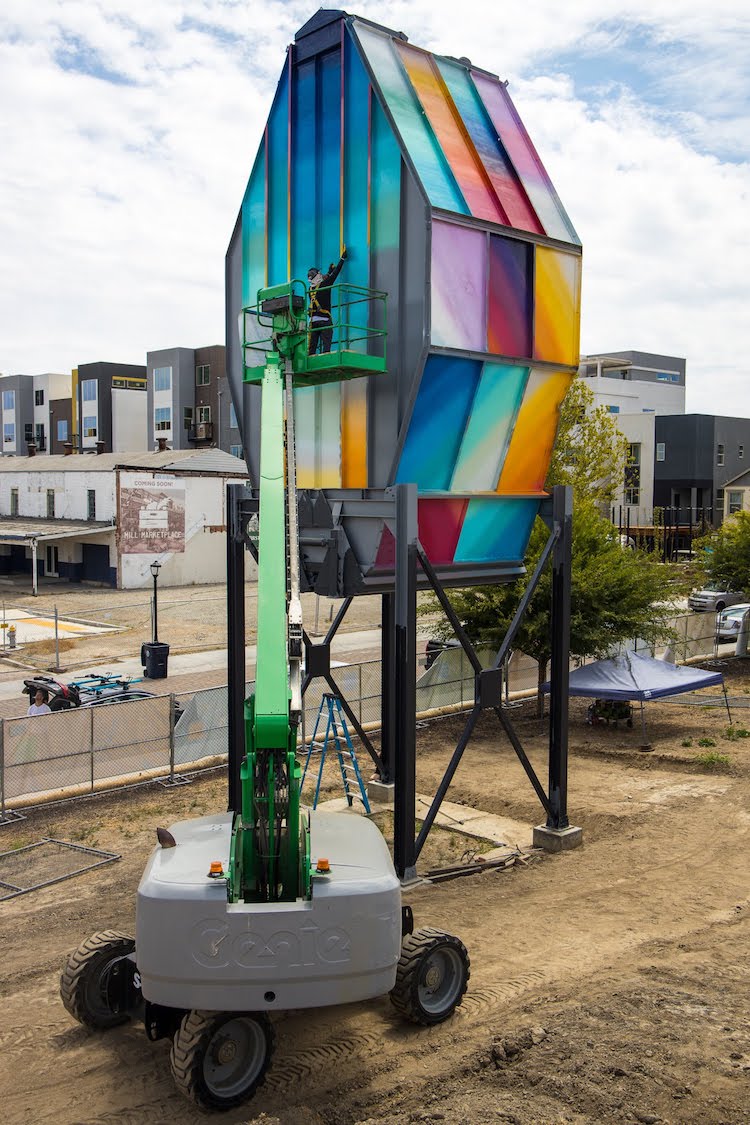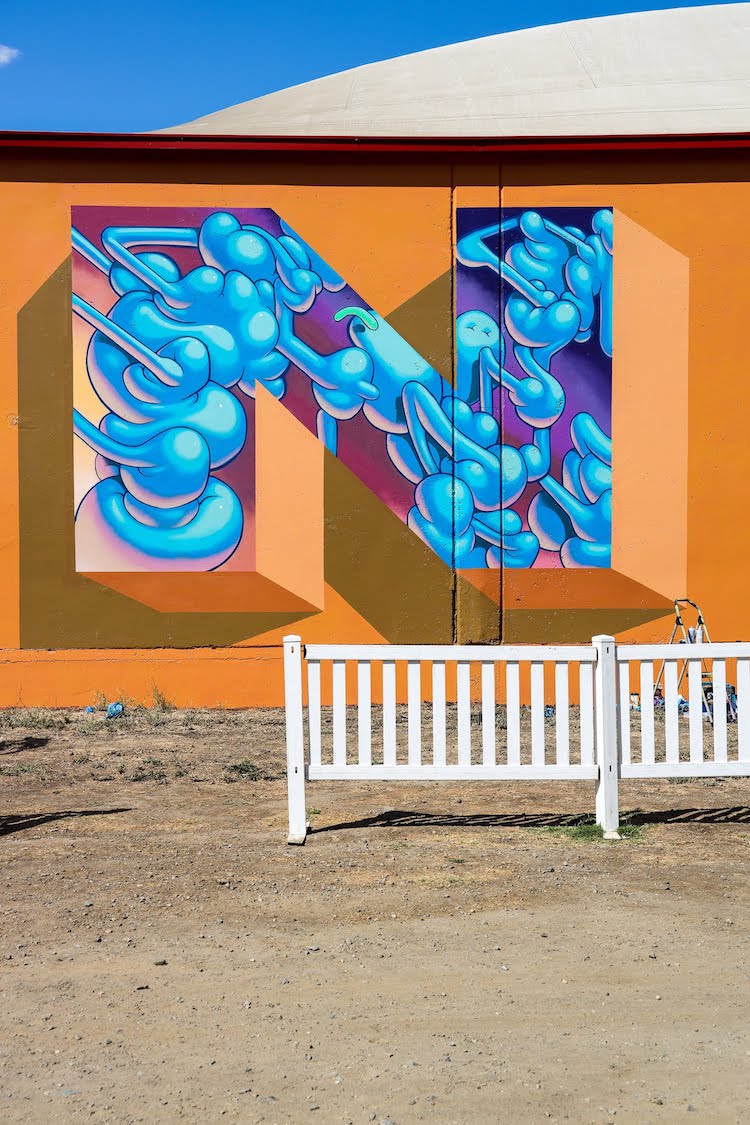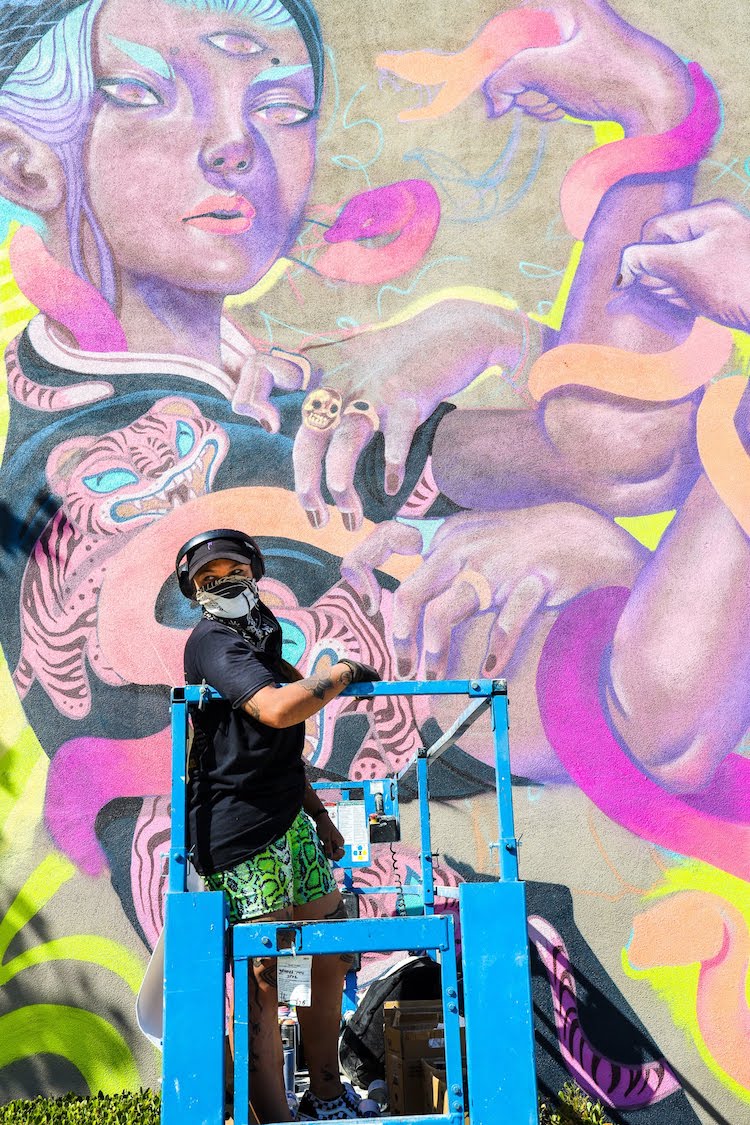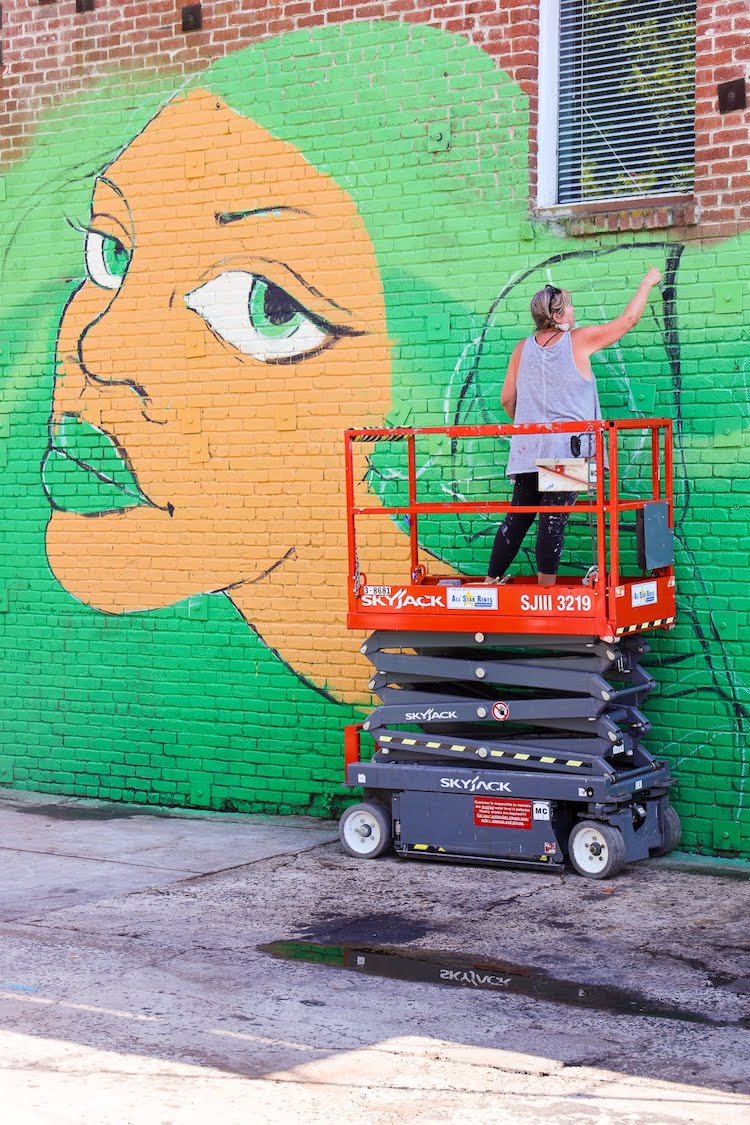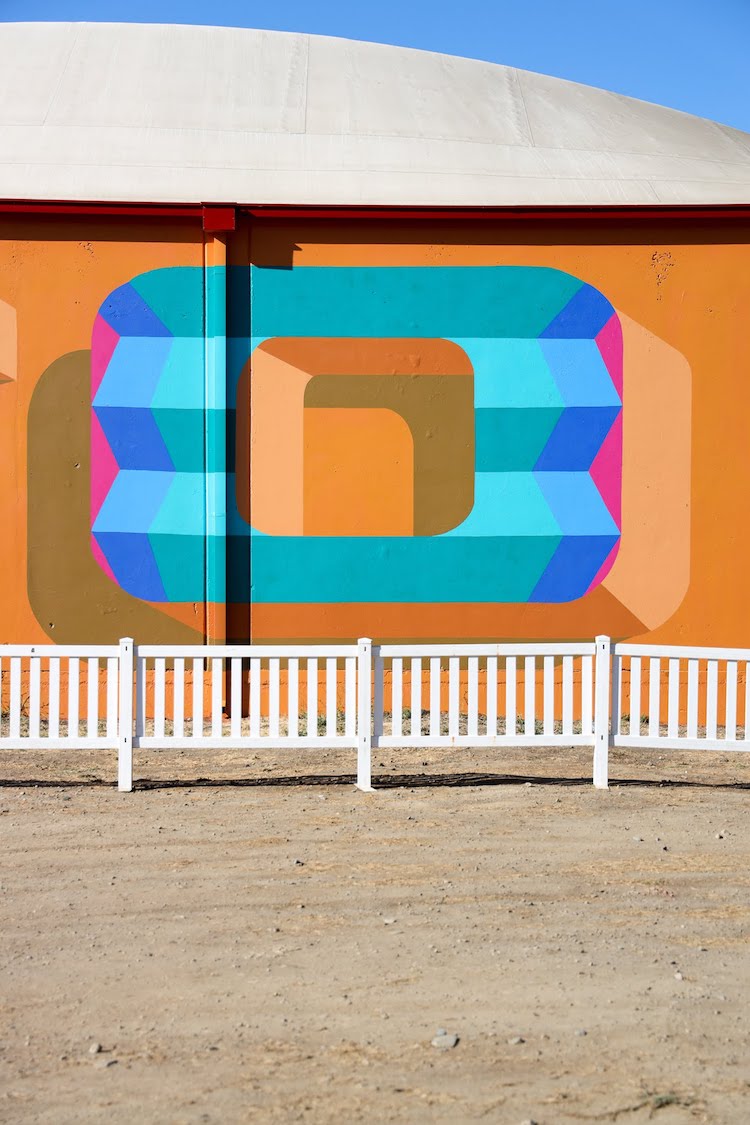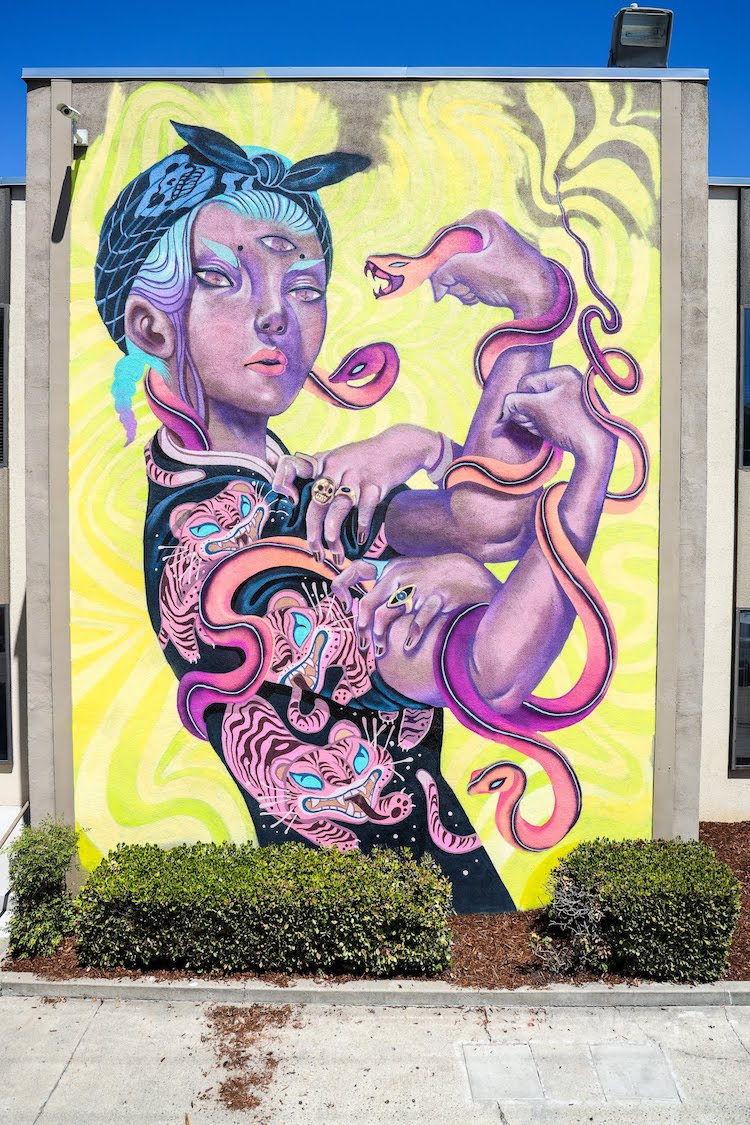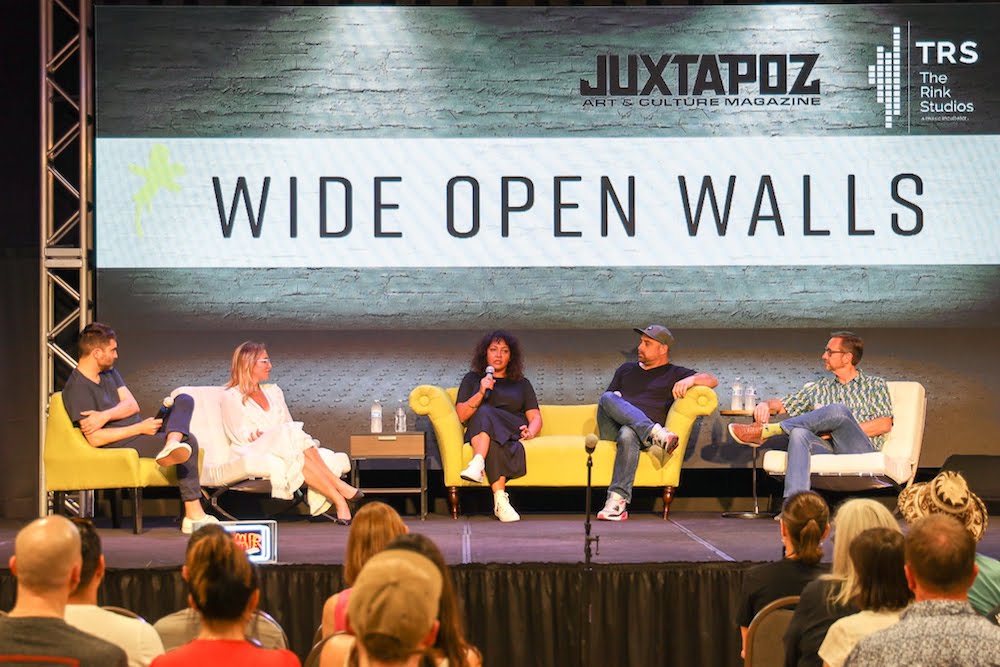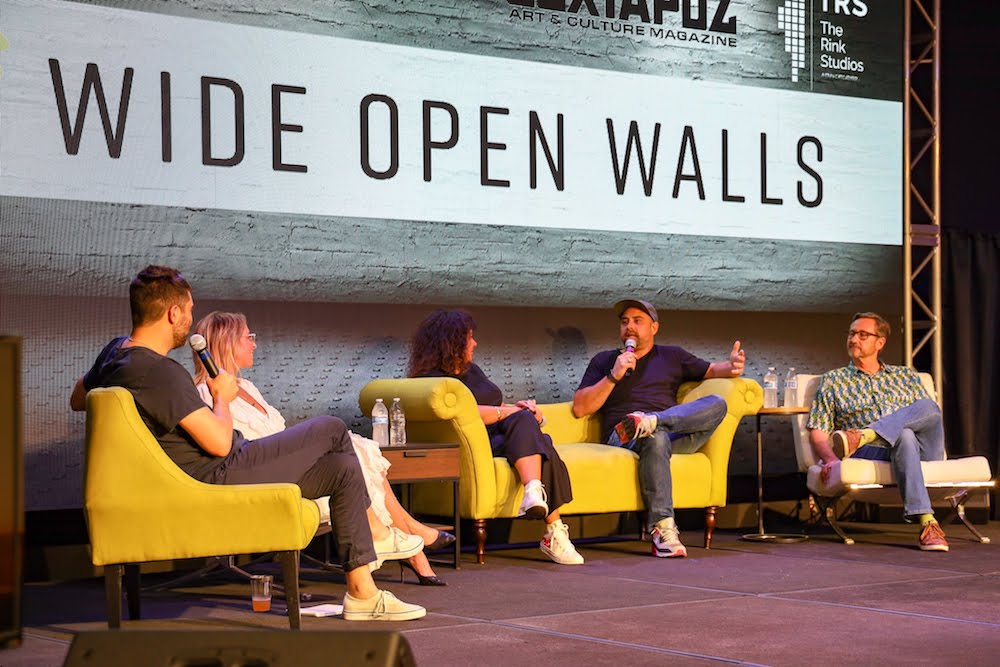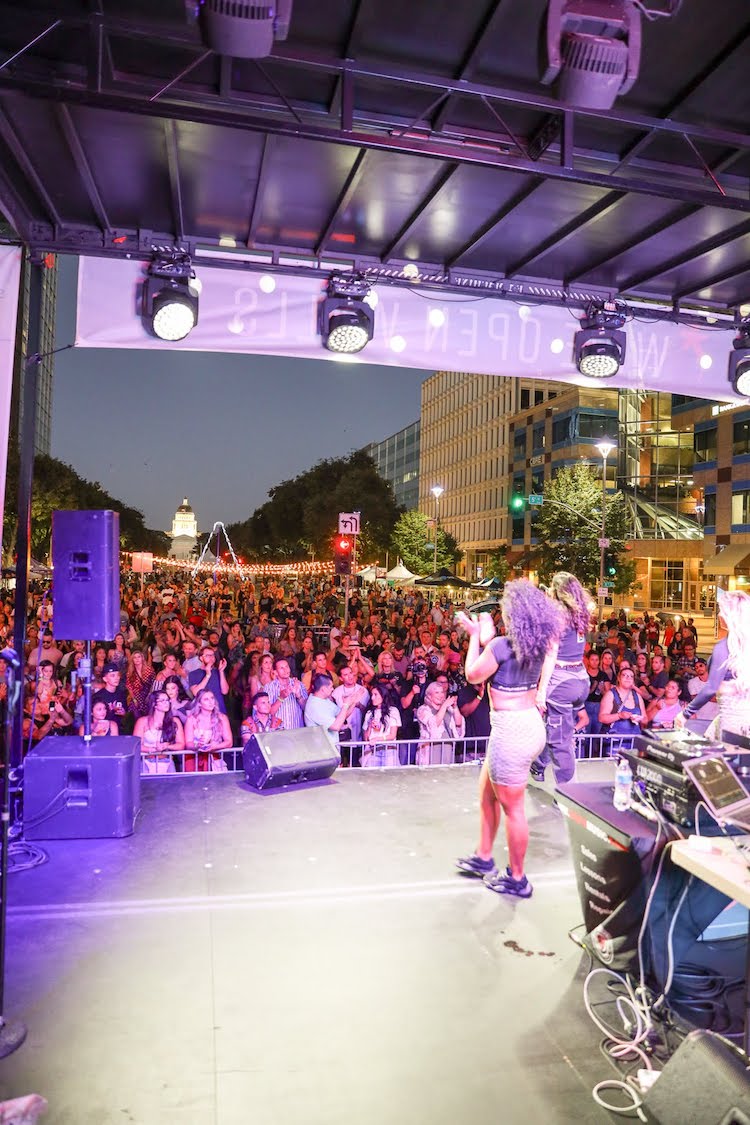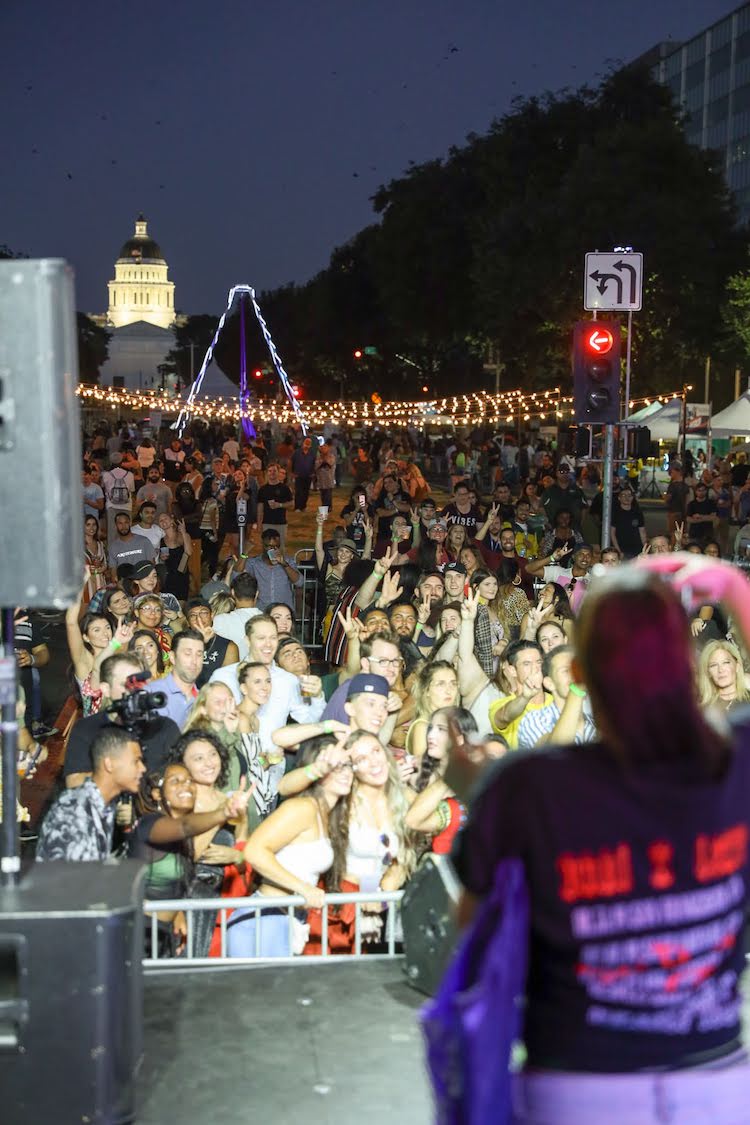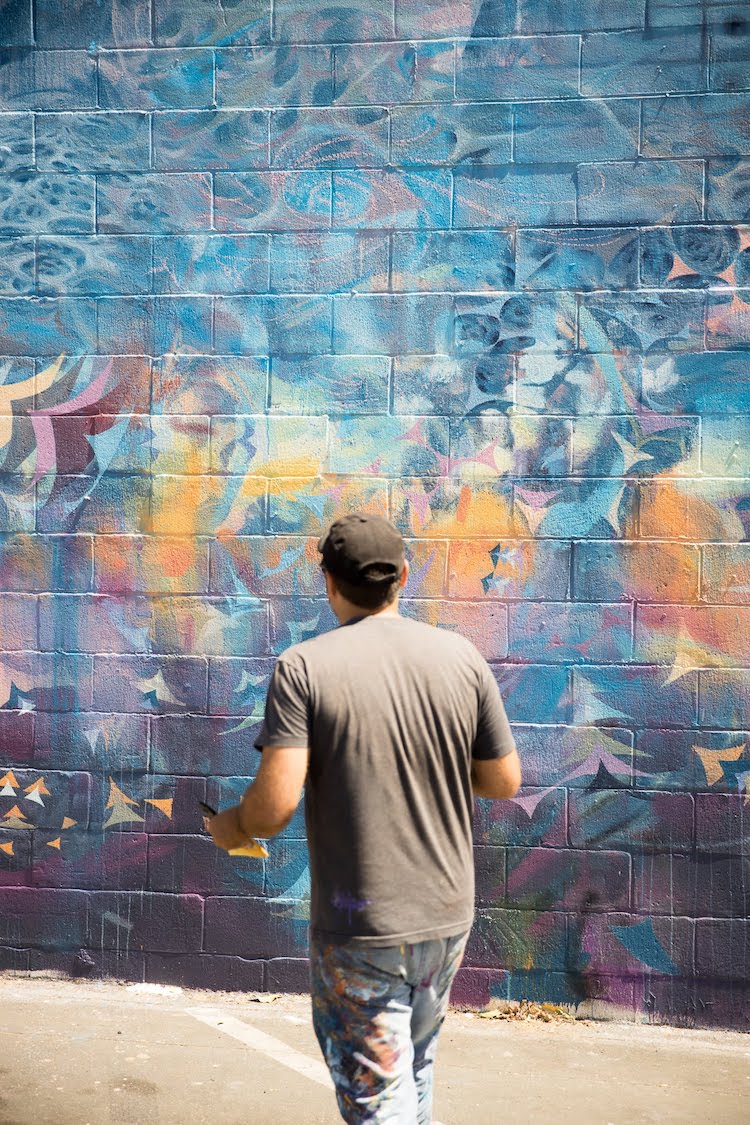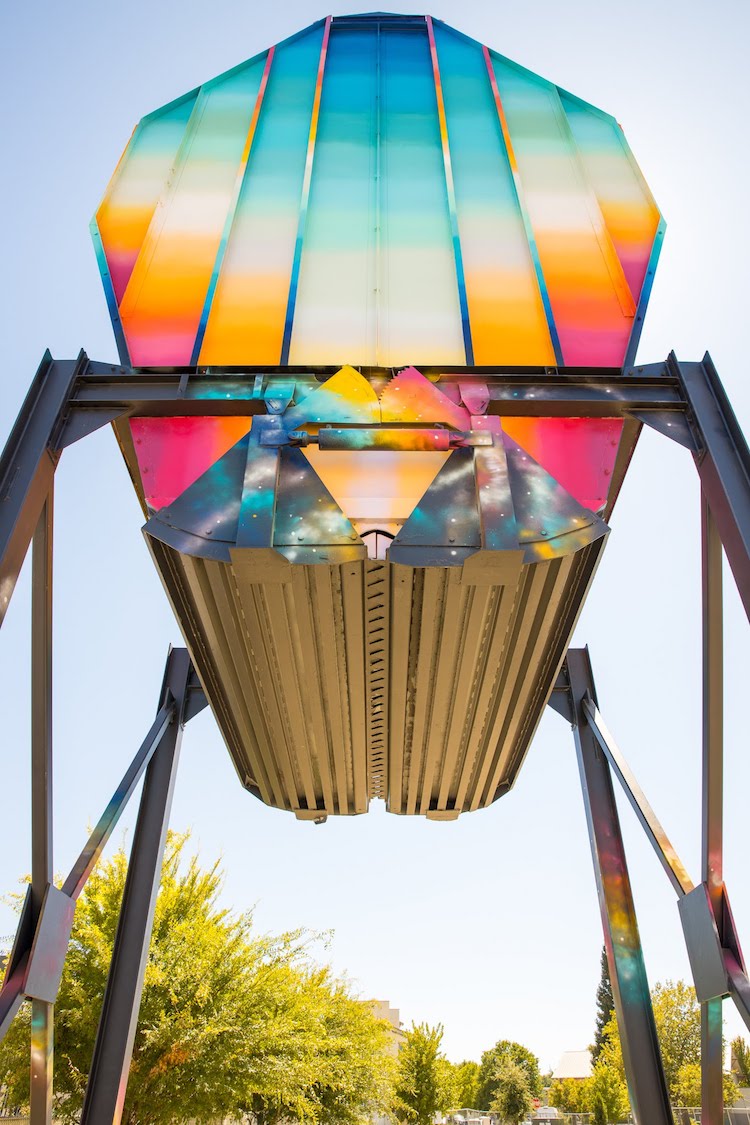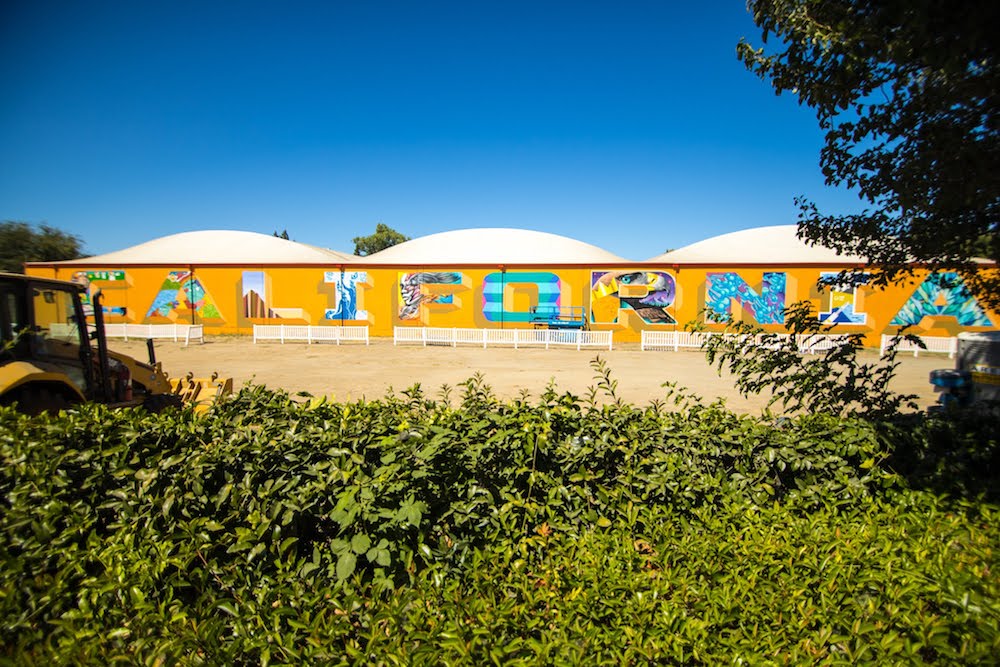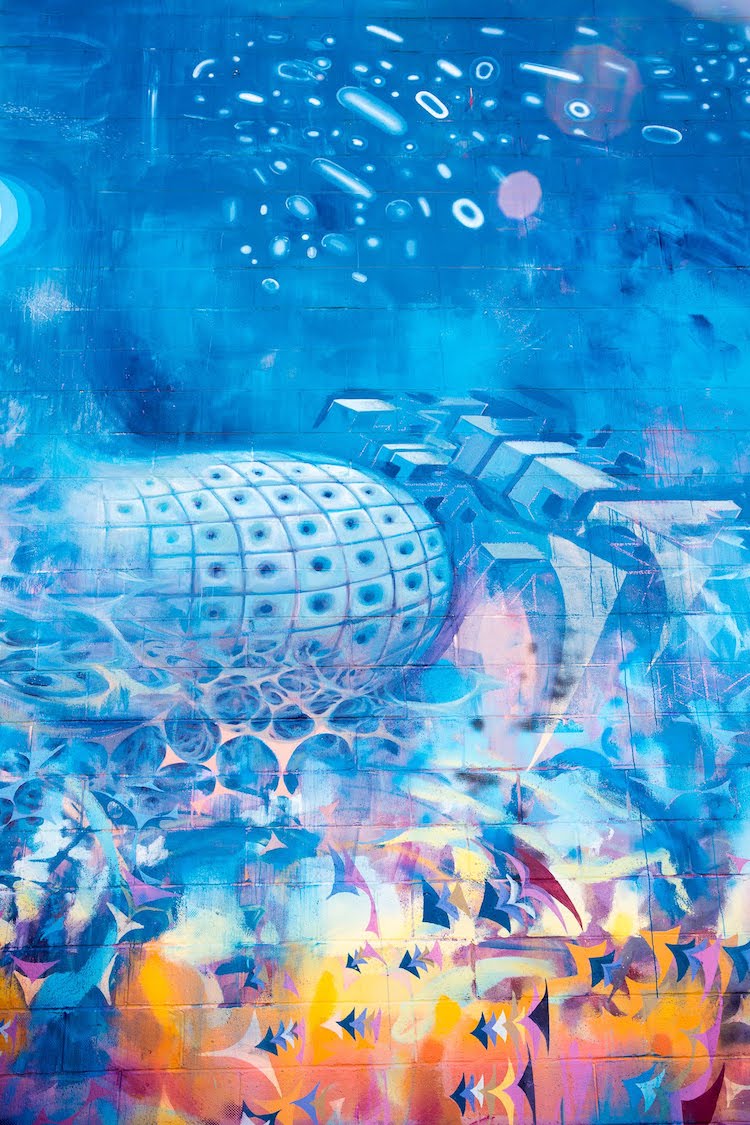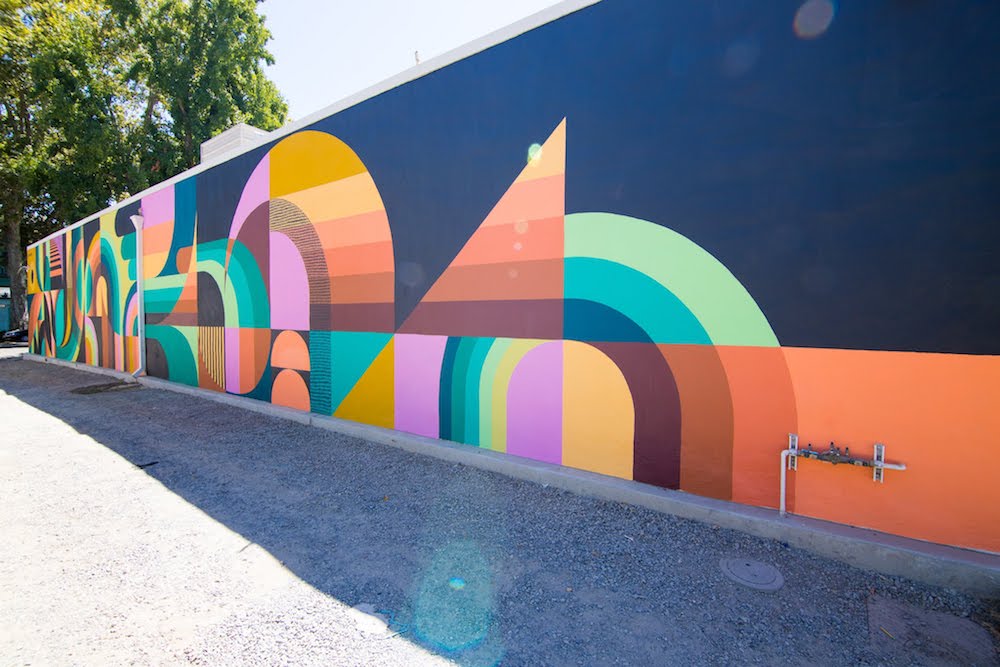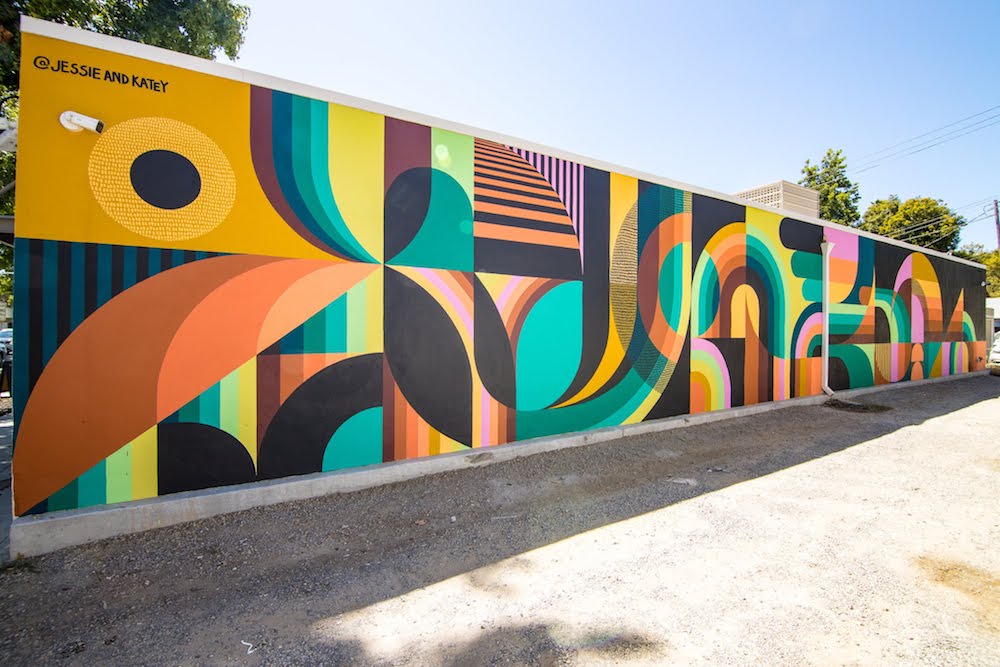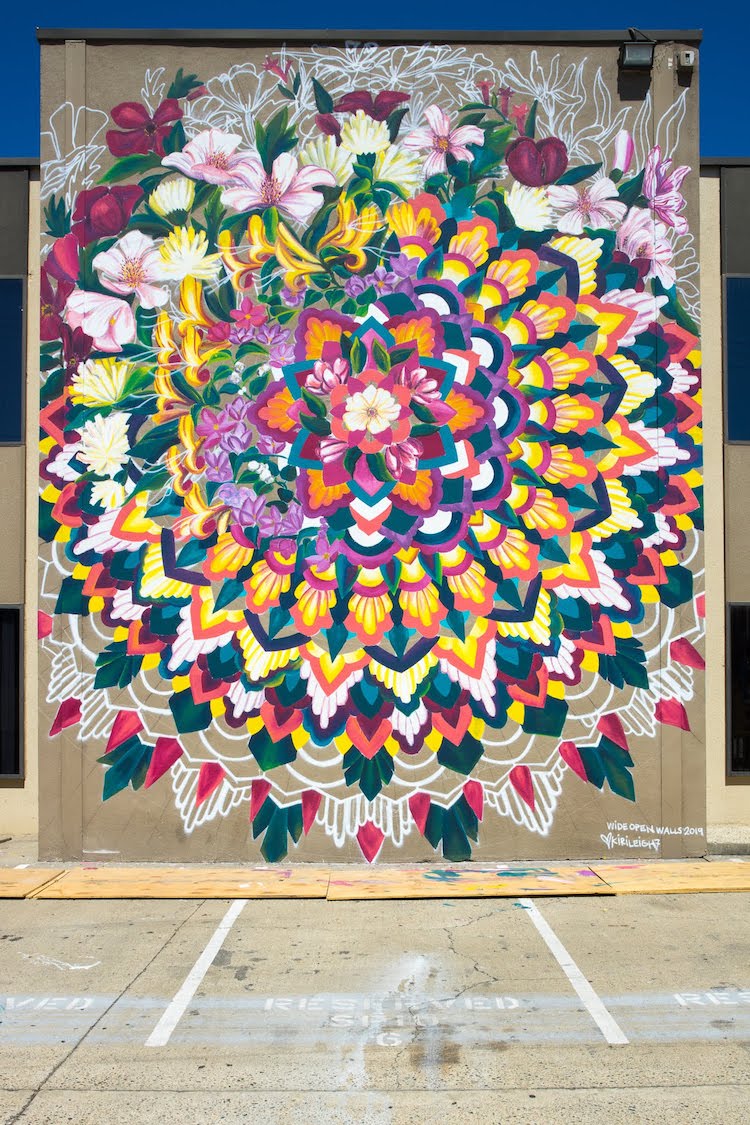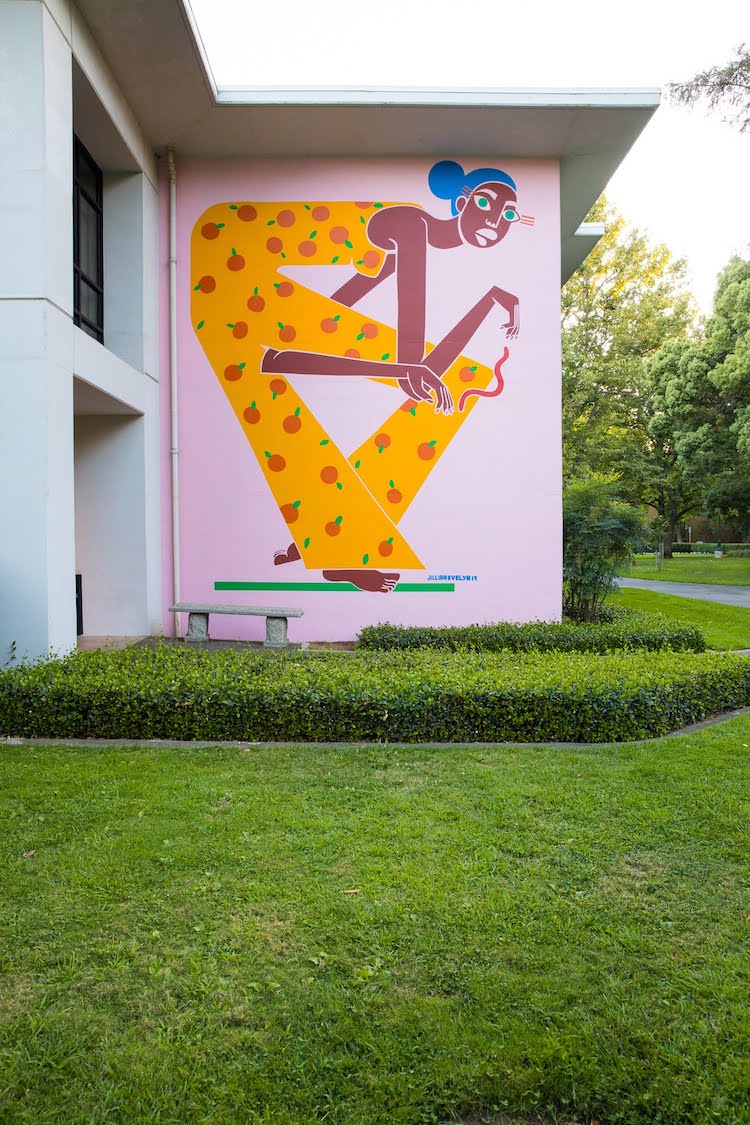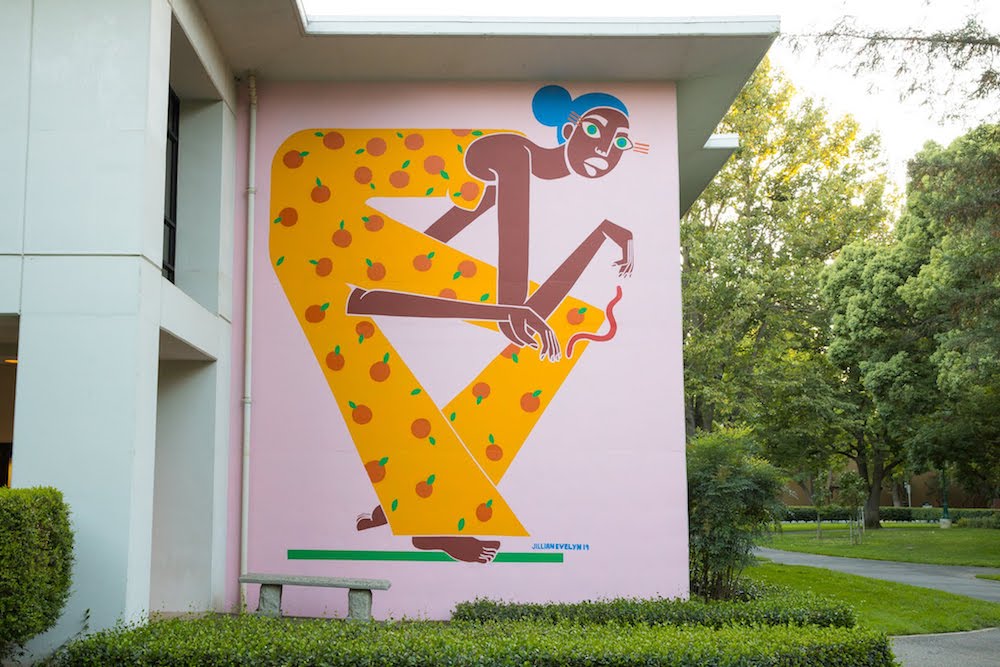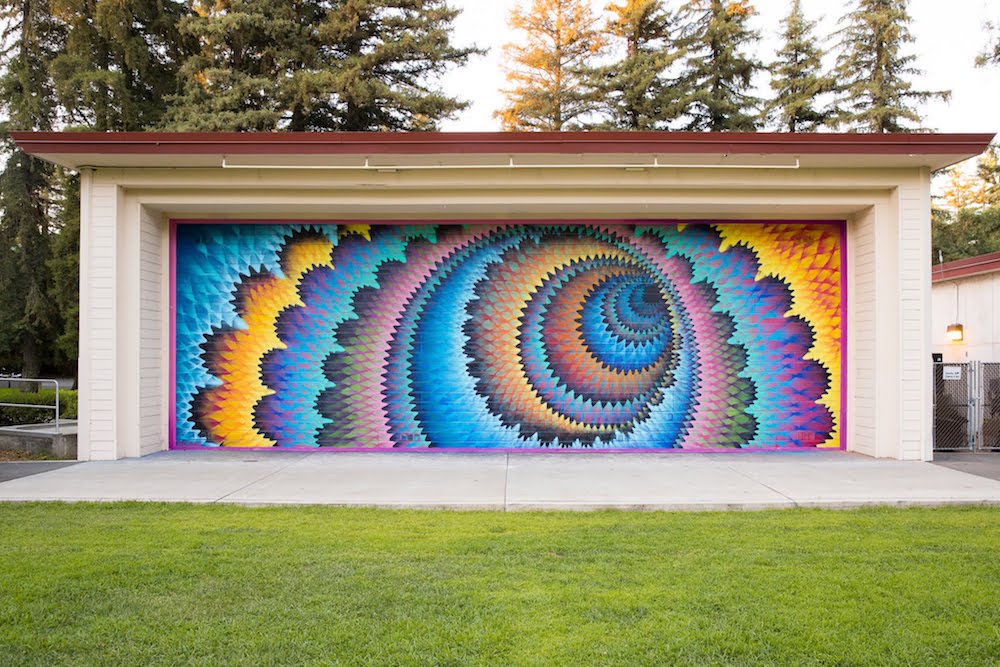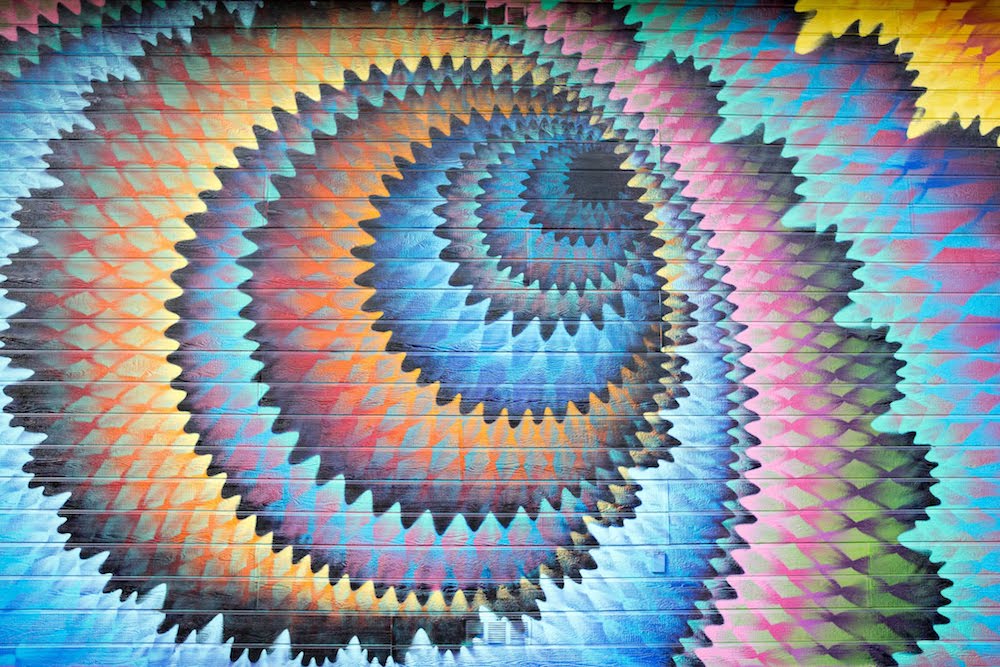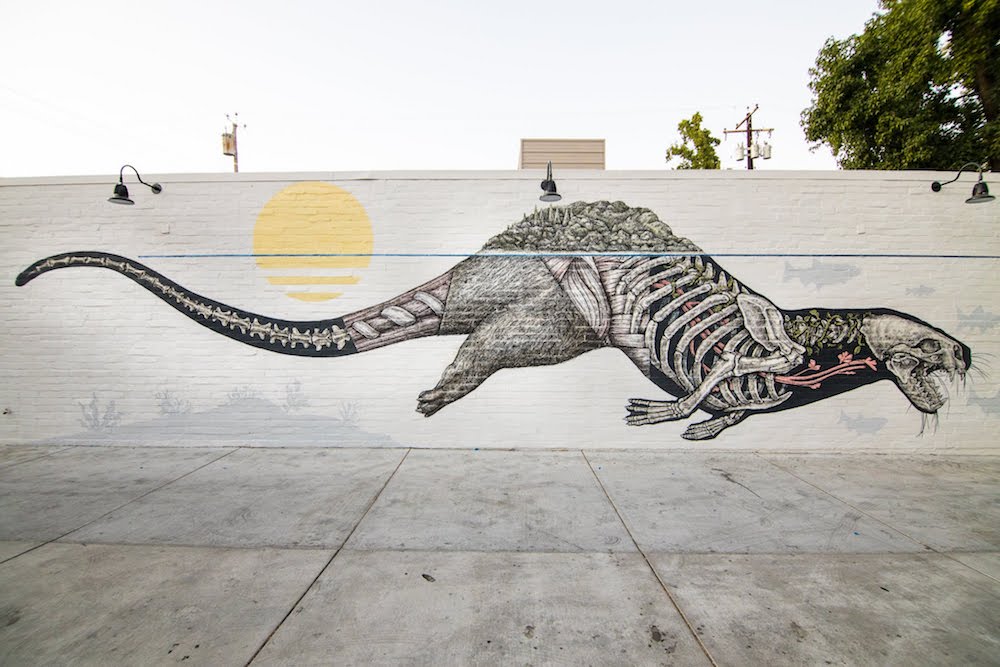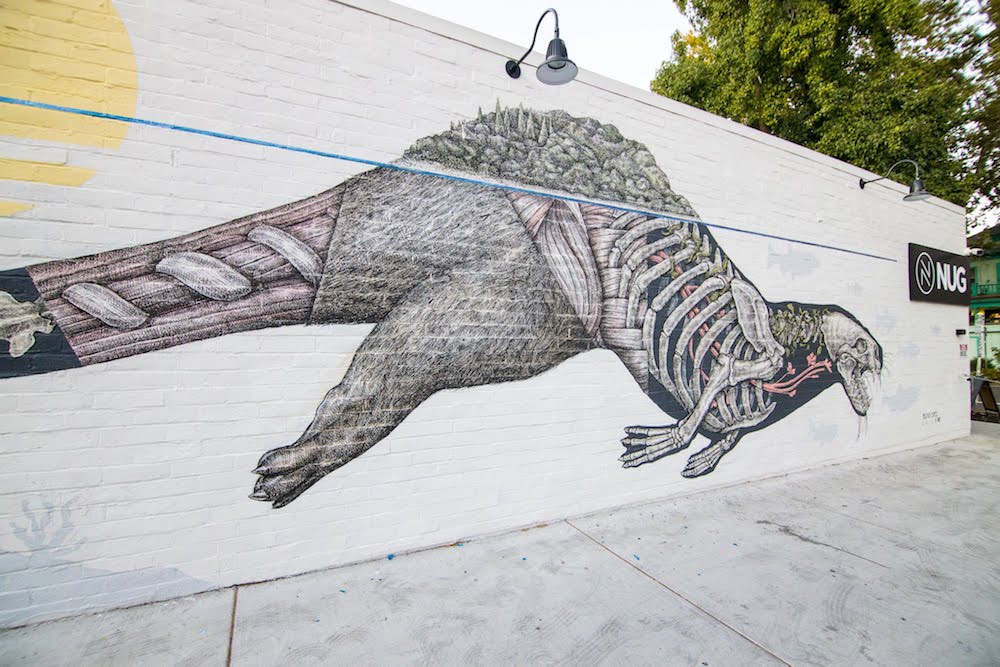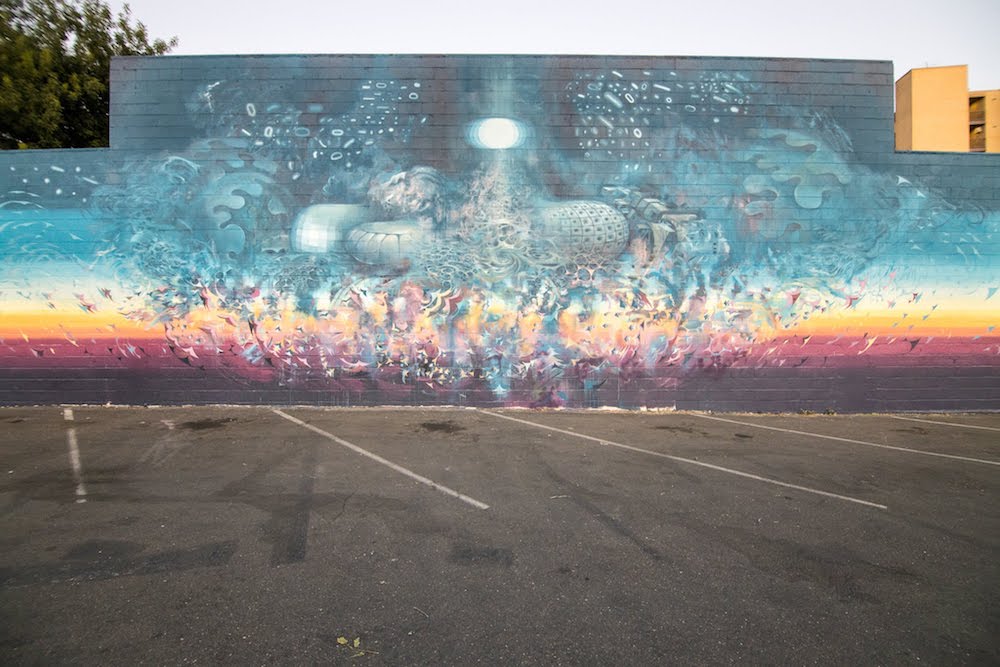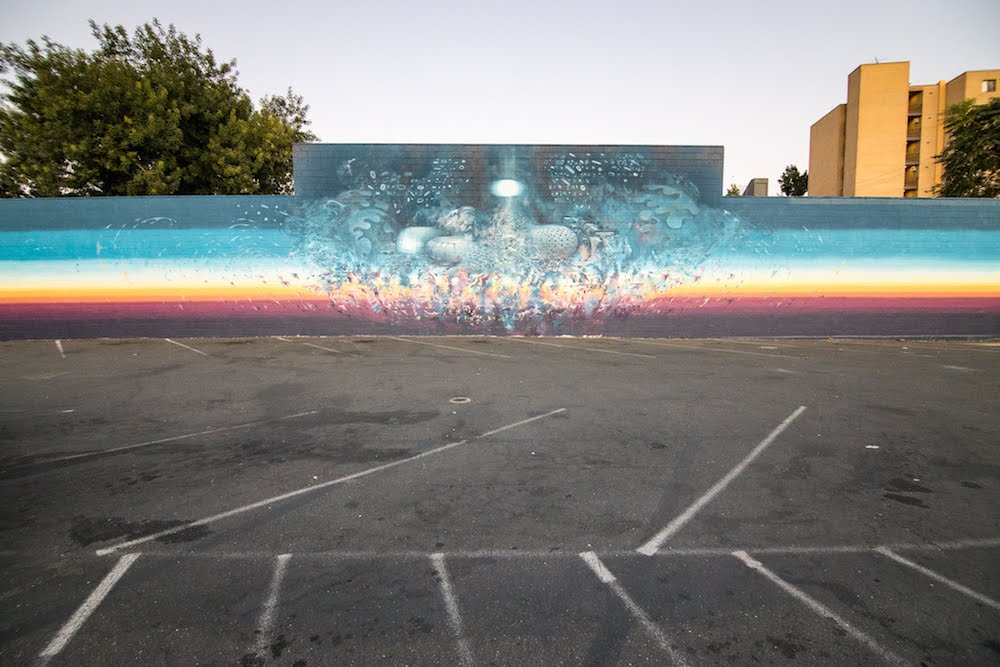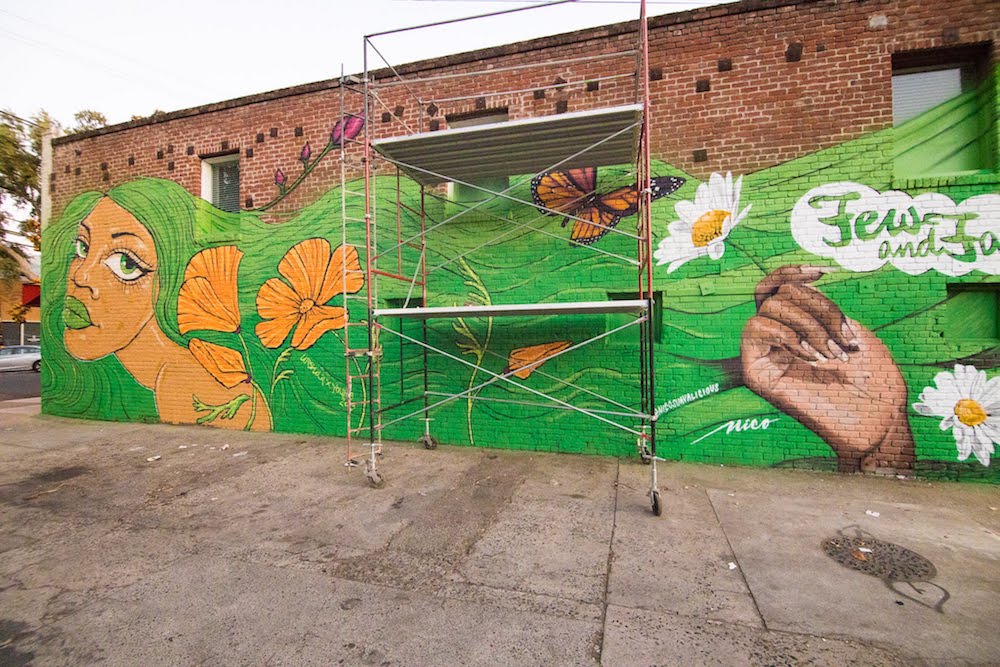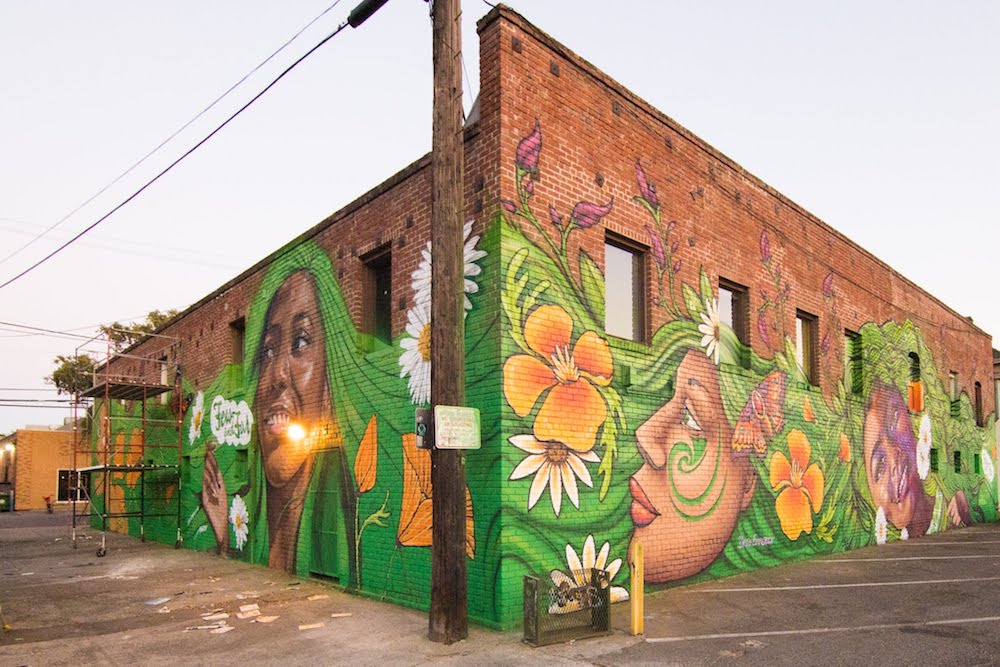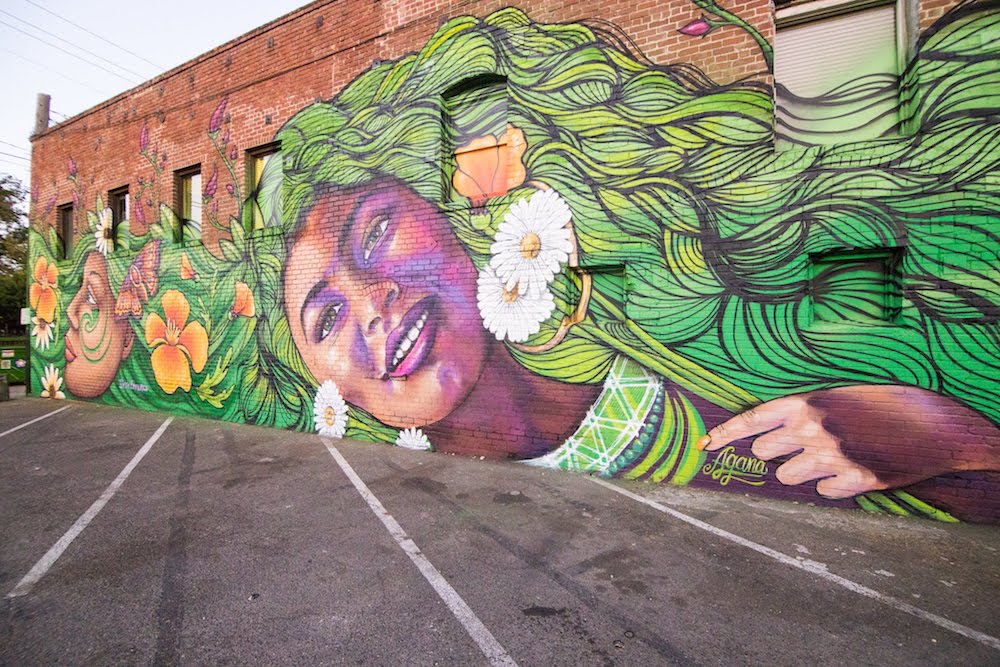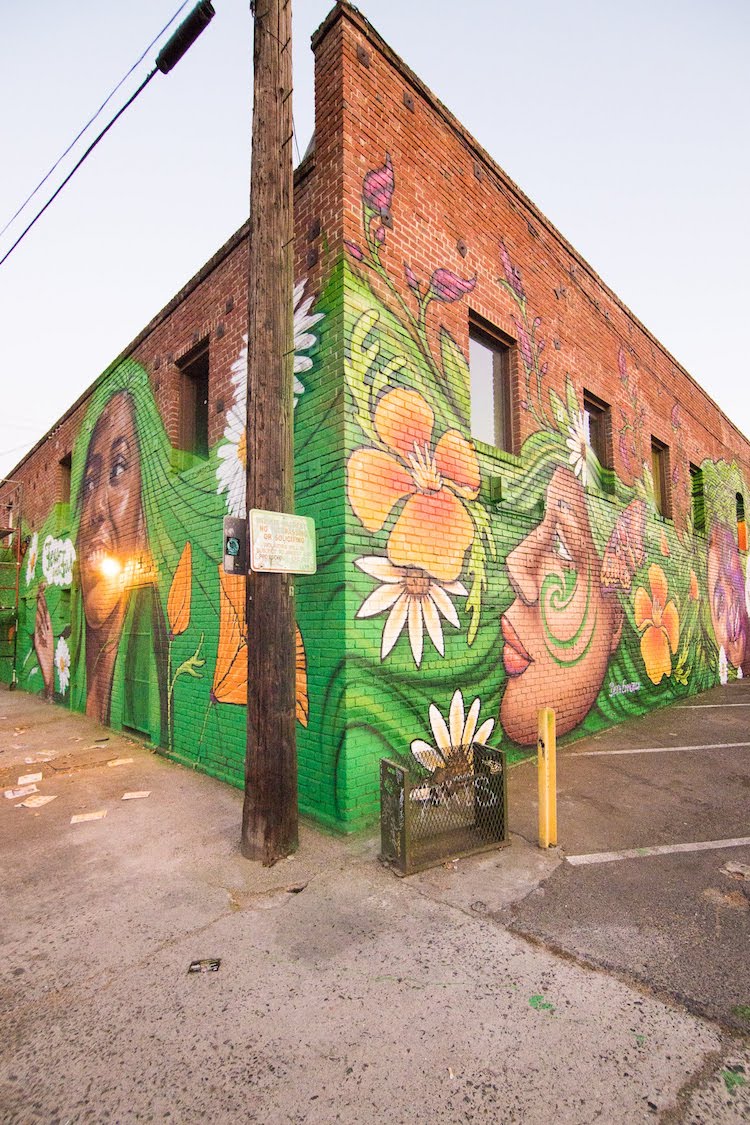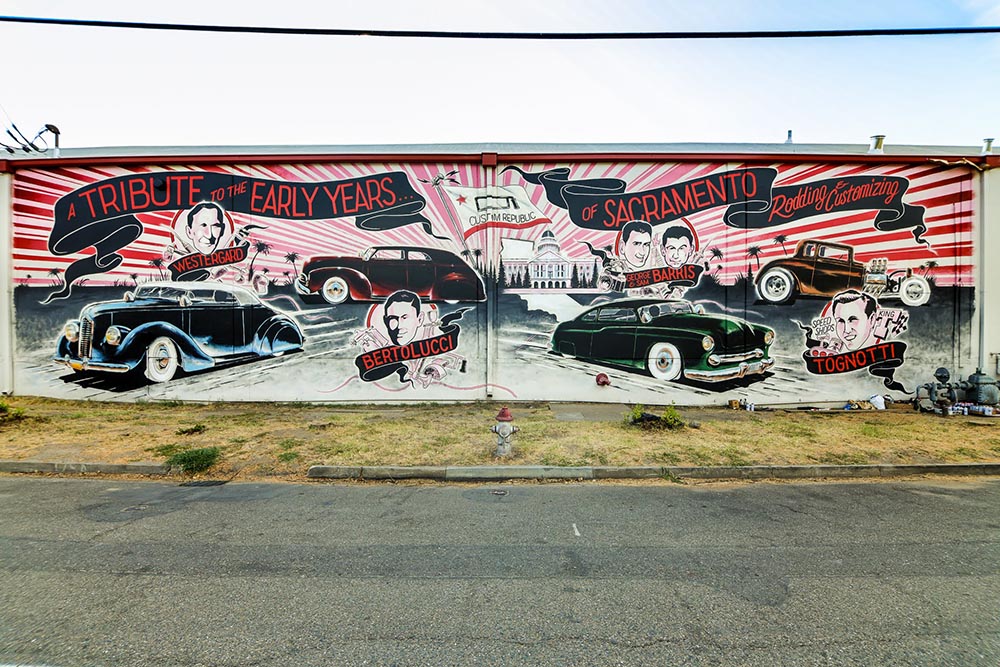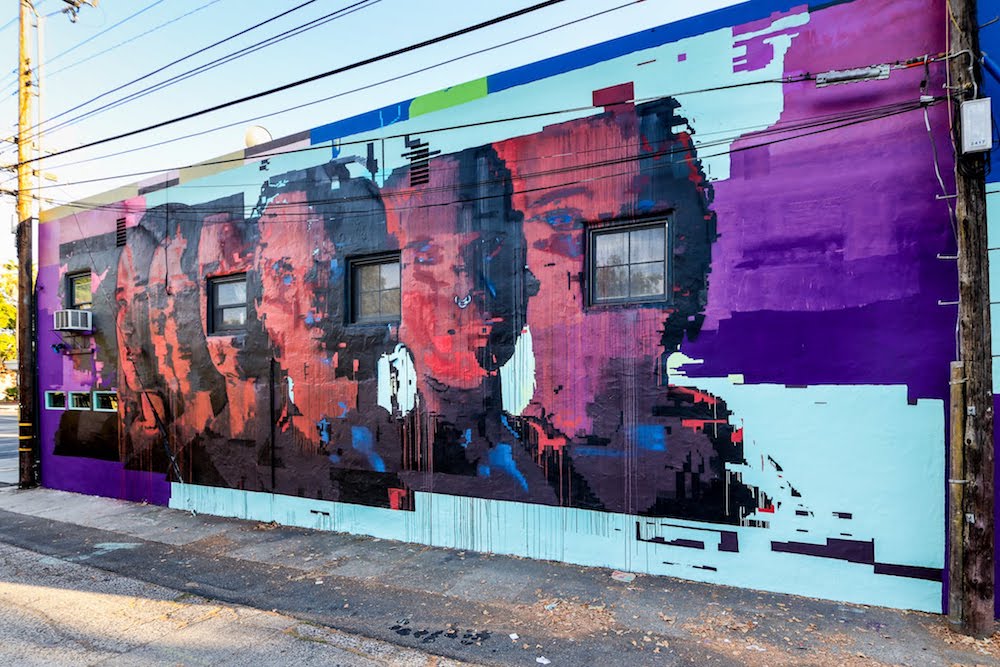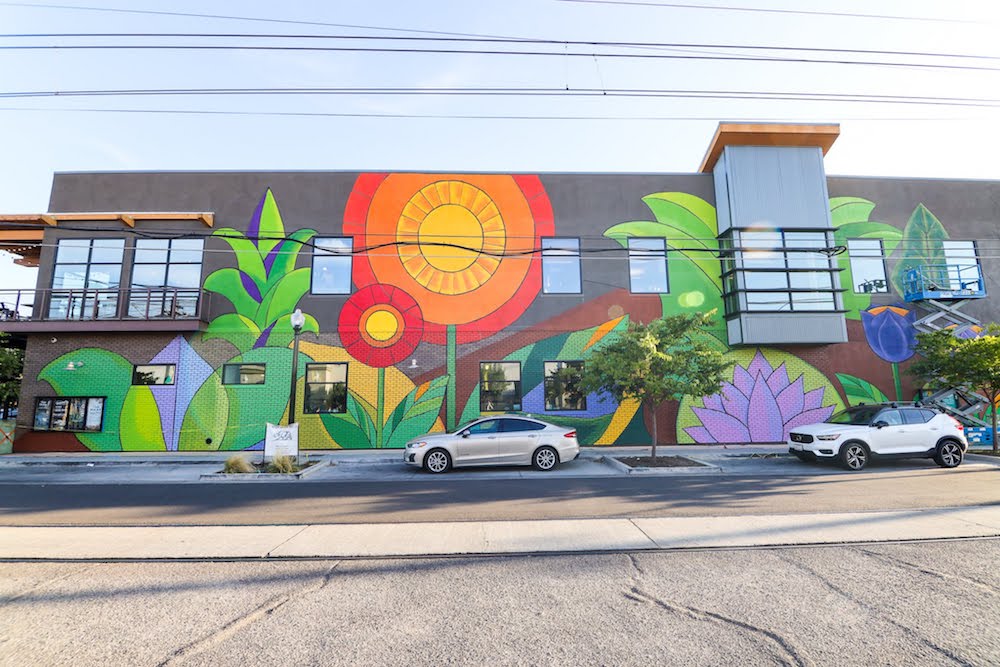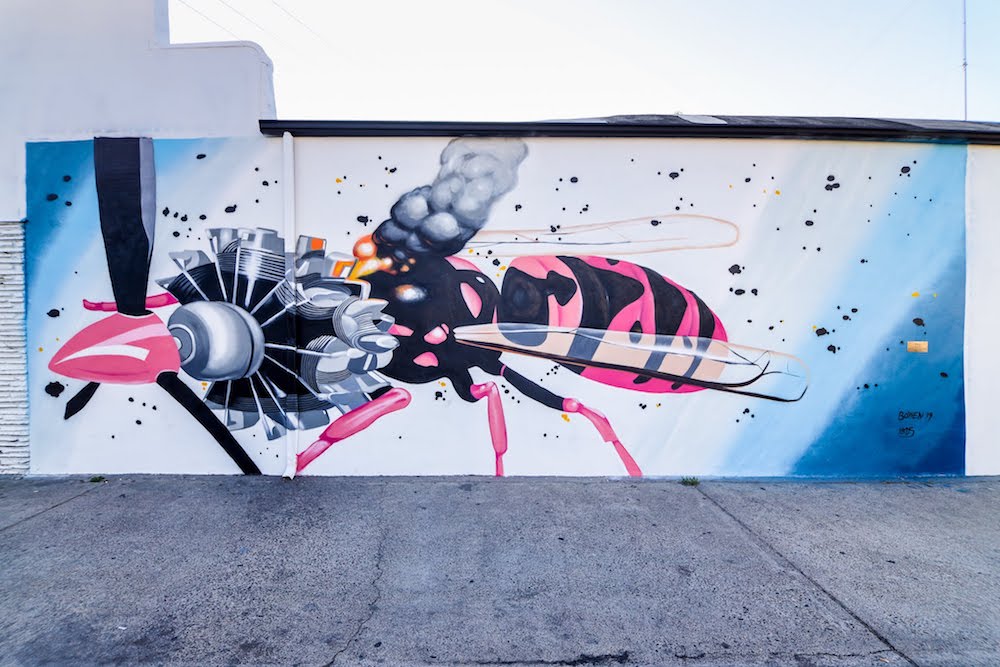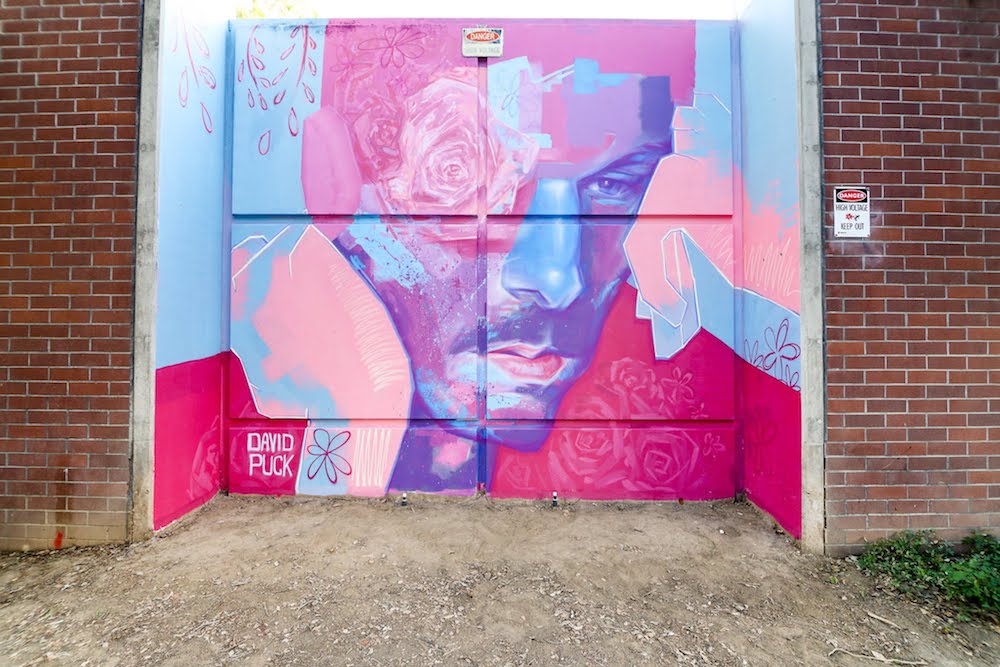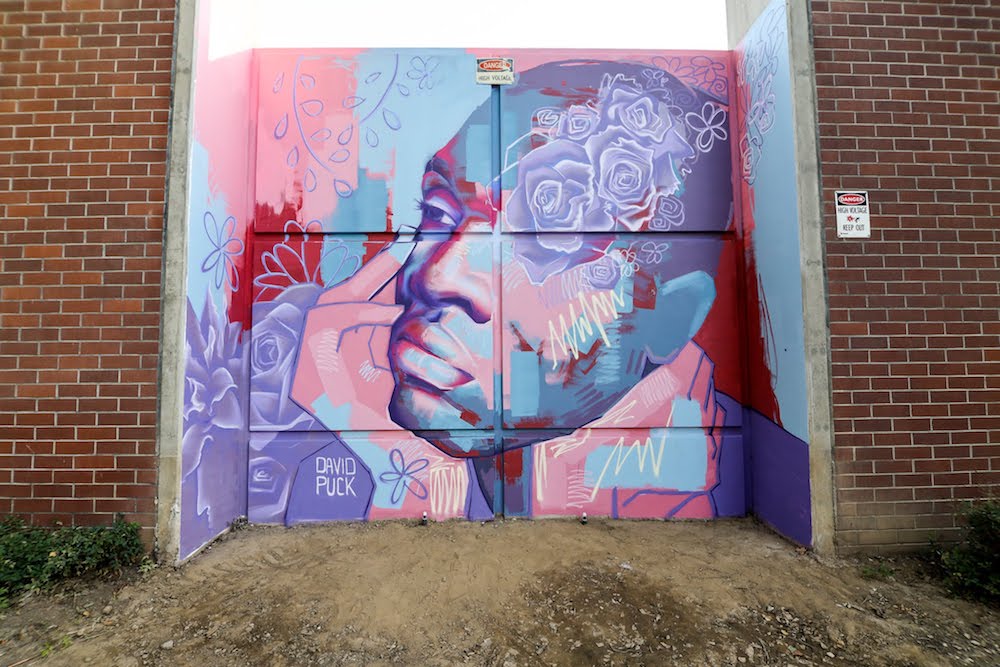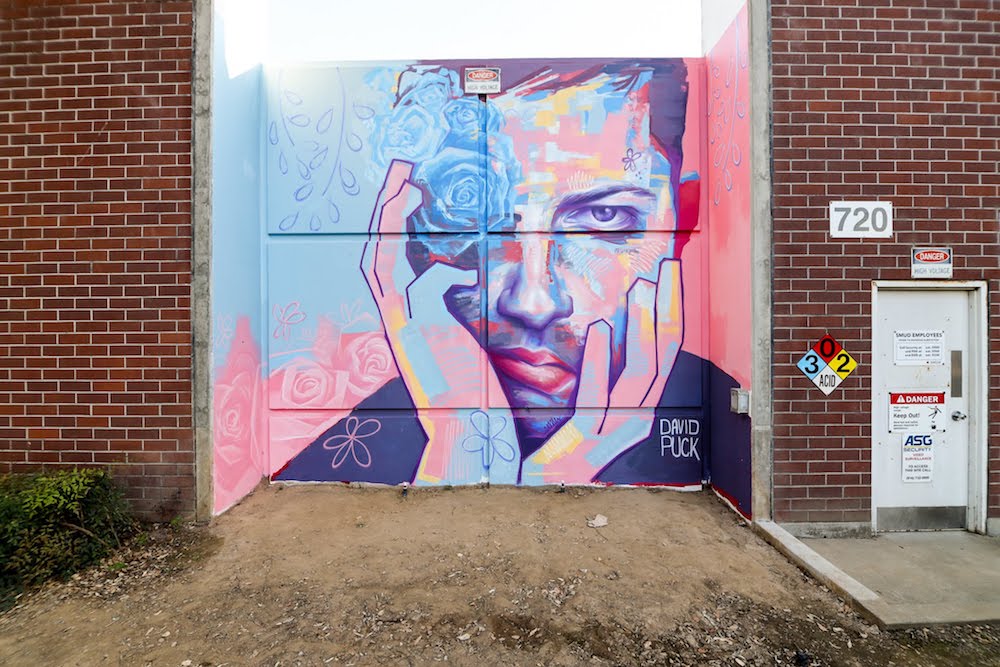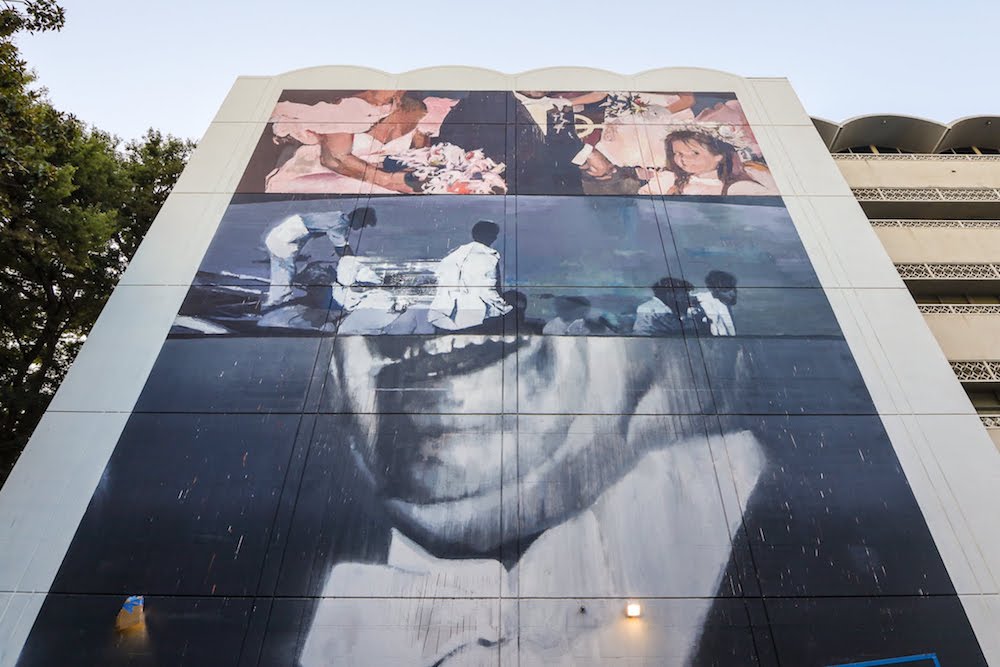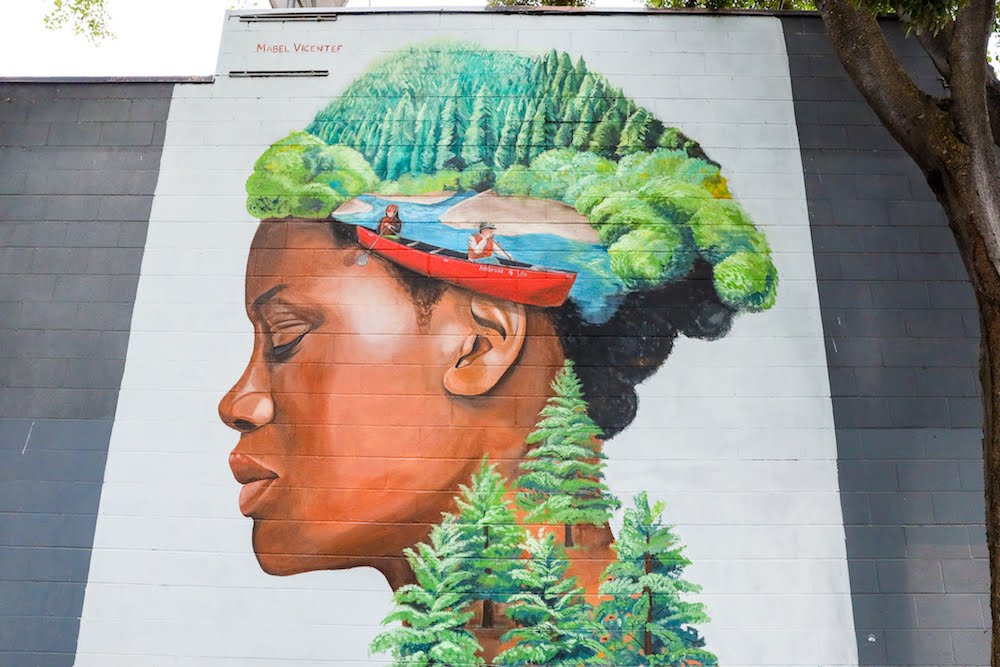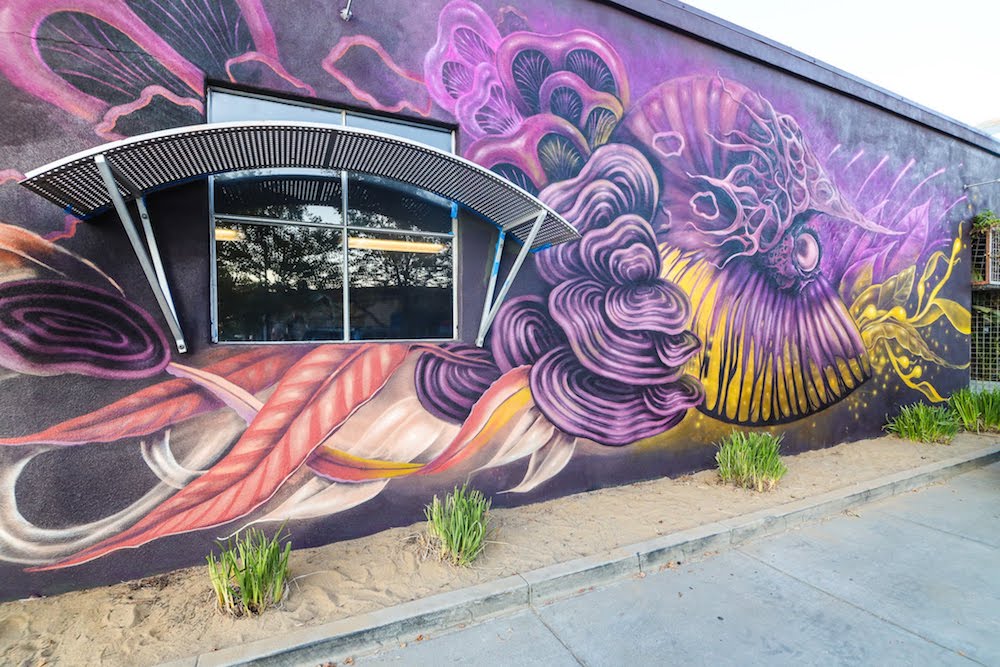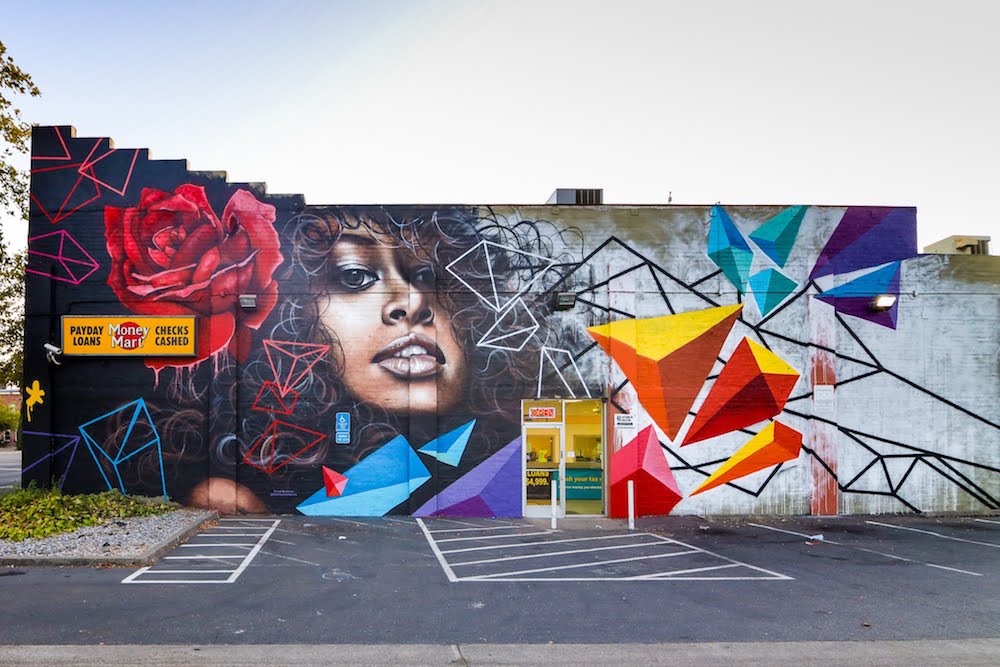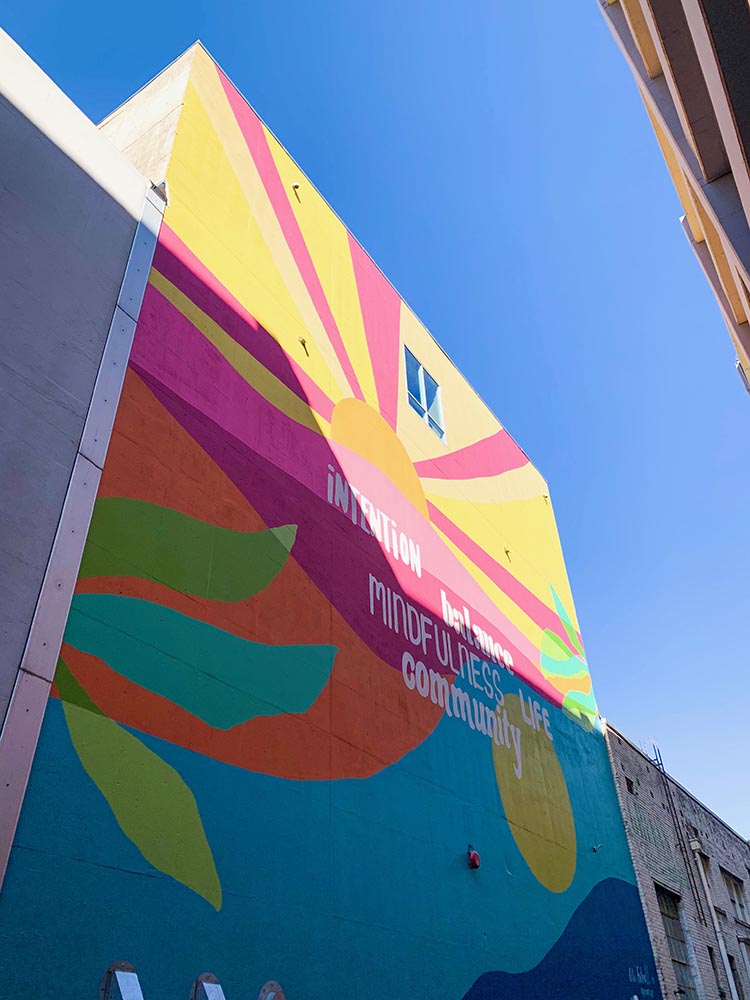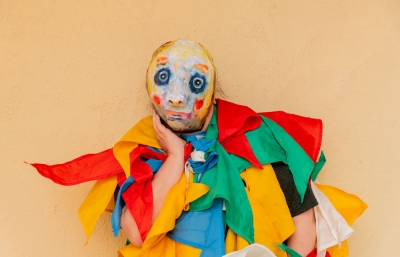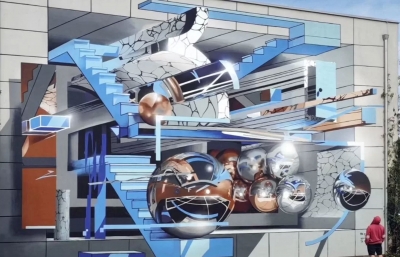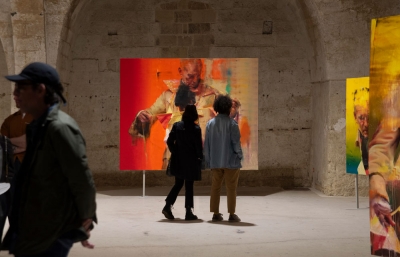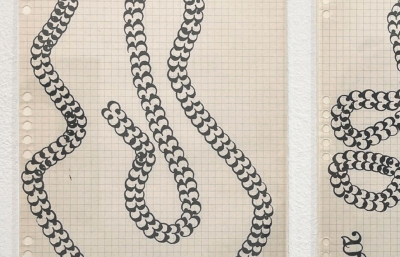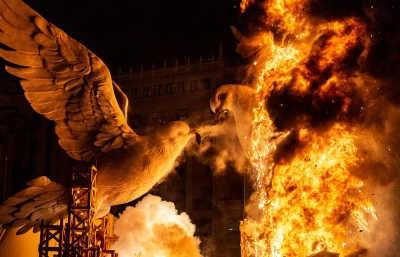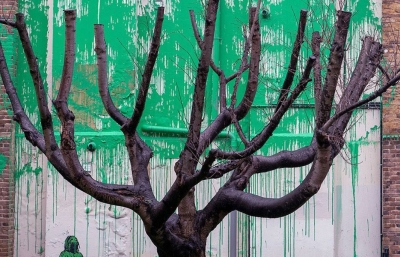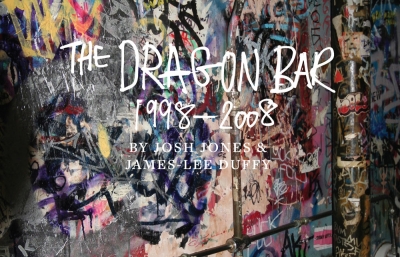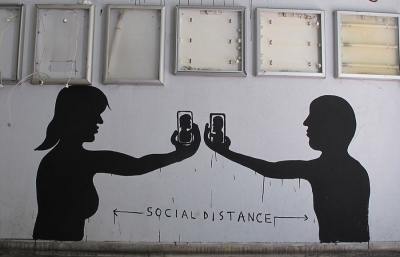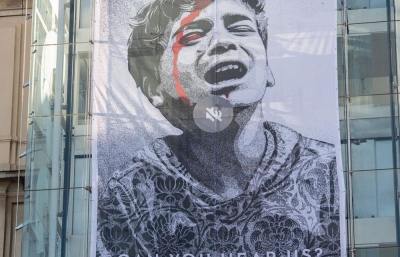One of the vital components of a good public art festival is dialogue that weighs the positives and negatives of contemporary muralism. The point of a street art festival, in this instance and in general, should be to both activate a community's connectios to a city and open new entry points to access already established art programs within those places. I've always believed that in hosting and creating a street art festival, with esteemed artists from the around the world, it is inherent that there will be challenges in terms of content and placement, as the community engages any way they can while the organizers strive to partner with local institutions. And locales have to live with these works for 365 days a year. There is a lot to weigh.
Wide Open Walls, which just recently celebrated their 4th year with a mural festival in and around Sacramento this past month, seems to now be at its most productive and healthy because it has begun to create conversations about what the city's art narrative can be. Sacramento has long had a fantastic museum tradition. The Crocker Art Museum is a gem, and from what I have heard, the California State Railroad Museum is brilliant. There's a long legacy of important artists who have either studied or taught at nearby UC Davis. Additionally, the graffiti culture is famed, as the train yards around the city give testament. But a mural festival in this day and age, given Instagram moments and the fame that many muralists enjoy in 2019, is a different type of legacy to consider, and Wide Open Walls is beginning to engage with some major stars of that genre, such as Shepard Fairey, How Nosm, Axel Void, and Hera, all lending a widespread impact in how the city is taking shape with a growing international spotlight.
Which is why Juxtapoz wanted to host a panel discussion in Sacramento during Wide Open Walls, with the community engaged, listening to the stories of Wide Open Walls' organizer, David Sobon, as well from Murals In the Market in Detroit, or POW! WOW! in Hawaii and Wynwood Walls in Miami. It opened a portal in learning how money is raised, the complexities of organizing a festival in addition to the hardships (and strong bonds) built with cities that can last more than just one year, or even one week. This is how we think Wide Open Walls can establish itself for future years: creating a public discourse about art in lives public art in Sacramento and beyond. With the constant fear that murals are the trigger for gentrification or unwanted and sterile growth, these panels are needed more and more. The community should be allowed to comment and add their opinions to how public space is being altered.
Of course there are inherent advantages and disadvantages for a festival to open themselves up for public scrutiny, but what I saw during this panel, and the week that followed, is that this process will help create a better Wide Open Walls moving forward. With fully half the roster made up of local artists, and inviting healthy debate is great for growth. This what made a long established Nuart Festival remain a pre-eminent voice in street art for almost two decades. That is the benchmark, and they have lasted this long because they opened the doors to progressive dialogue, dedicated to how public art can better serve a community.
This year's Wide Open Walls had one of its strongest rosters, from Axel Void, Hoxxoh, Alexis Diaz, Jessie & Katey, Jillian Evelyn, Mars-1, Jose Di Gregorio, Kirileigh Jones, Lauren YS, Kristin Farr and more. We engaged in numerous conversations during the week about how Juxtapoz's own coverage of public art (our open letter to Stockton, California in 2012 being cited a few times) has helped shape personal relationships to mural and street art festivals. Wide Open Walls spans the campus of Sacramento State to across City Hall, down alleyways and fanning out to small neighborhood theaters. The attempts to create a more sustainable, lasting festival is forming a living blueprint, and with a discourse beginning to emerge, Sacramento can boast a robust debate about where public art lives in its city, 365 days a year. —Evan Pricco
All photos by Mike Stalter

